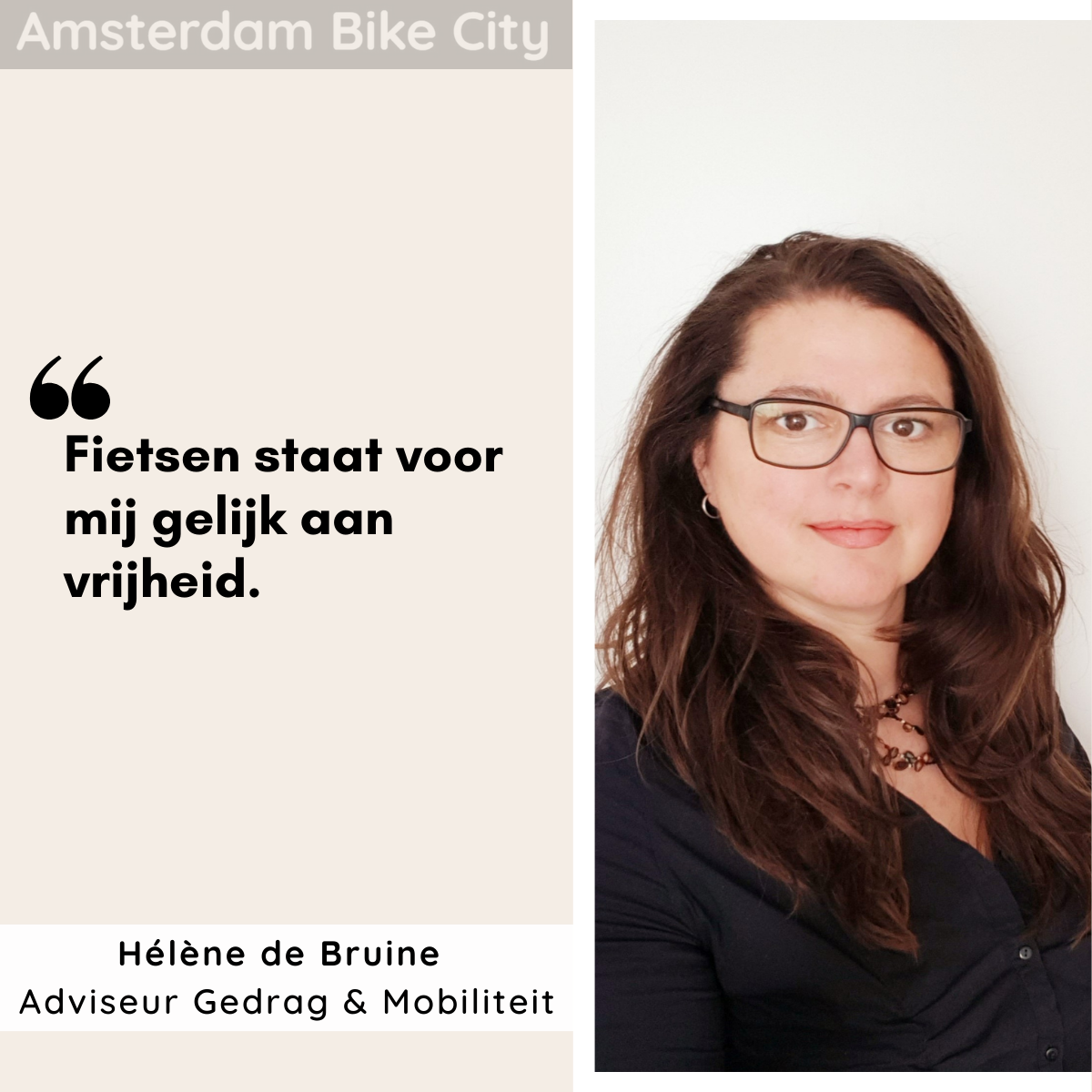Bicycle Innovation Lab: Hélène de Bruine
“To me, cycling equals freedom.”
The Bicycle Innovation Lab asks for ideas to improve the social safety of cyclists. A jury consisting of five professionals evaluates the entries. Hélène de Bruine is a Behavior & Mobility advisor at the Transport Authority of the Amsterdam region, and she is one of these jury members. What does she think of this year’s theme of ‘social safety’, and what elements does she find important when assessing the ideas? In this article, we briefly introduce Hélène.
Can you tell us something about your affinity with the bicycle?
“To me, the bicycle symbolizes a sense of freedom. You can go wherever you want, and cycling is healthy and sustainable. I would like for everyone to cycle more and to enjoy that experience. That makes it extremely important that cycling is safe and is experienced as safe. In my work, I have been working on this theme for years: road safety and people’s behavior in traffic.”
Can you tell us about your work regarding human behavior in traffic?
“Actually, everything has to do with behavior. It goes from people’s reason for why they want to get on a bike, to the decision to use smartphones in traffic. For most of the time, these choices are made unconsciously. It is essential to understand why people make certain choices. Or why they don’t make certain choices, such as when they avoid certain places. Those are important signals – and if we know why they avoid these places, the authorities can do something about it. In my work for the Transport Authority, I executed several interventions to investigate how we can get more people on their bicycles and give them a better cycling experience. I also participated in the Doortrappen program, in which we investigated how people can keep cycling (safely) as they get older.”
What do you find important about the theme of social security?
“While cycling, not only road safety (that keeps you sitting on your bike) is important, but also all environmental factors that affect how you feel in traffic. If people start avoiding certain places because they don’t feel comfortable there, then something isn’t right. As I said, cycling to me equals freedom, and I would love it if everyone could experience that at all times. I find it troubling when people take their bicycles less often, and are therefore limited in their freedom.
The challenge of the theme of ‘social safety’ is that we cannot put police officers in all unpleasant places or fill the public space with cameras. That’s why we all have to think carefully about what we can do in places that can feel unsafe.”
What would you like to see when evaluating the entries?
“Naturally, I don’t want to give away too many examples, because I like it when people come up with their own creative ideas. But in Amsterdam, for example, there is already an initiative that allows people to choose calmer routes. Some people are easily scared in busy places where we receive a lot of stimuli, so this is a great solution for those people. And of course many people already take measures themselves. Those are often very straightforward: they text someone they know when they go home, or they gather with others to cycle home together.
I think it would be nice to be really surprised by reading the entries and ideas that have an unexpected approach.”
And what will you pay attention to during the presentations?
“Because of my background in behavior and mobility, I will mainly pay attention to whether the target group and their (unconscious) motivations have been carefully considered. With that I mean: for which groups of cyclists is the idea relevant and important, and why? I think it is important if the participant has thought carefully about this and has affirmed this. In addition, I like innovation, but I think it is especially important if the effectiveness and feasibility of the solution have been considered. Naturally, it is best if an idea can actually be implemented. That is also the most fun for the winner.”








